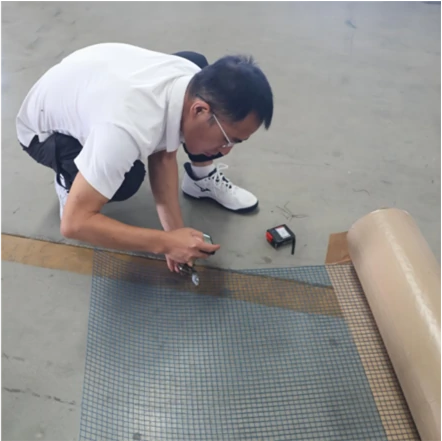Understanding the Weight Chart for Welded Wire Mesh and Its Applications in Construction
Understanding Welded Wire Mesh Weight Charts
Welded wire mesh is a versatile material widely used across various industries, including construction, agriculture, and manufacturing. It consists of intersecting wires that are welded at each junction, resulting in a strong and durable grid structure. One essential aspect of selecting welded wire mesh is understanding its weight, which can be accurately determined using a weight chart.
The Importance of Weight Charts
Weight charts for welded wire mesh provide essential information regarding the weight per square foot or meter of various mesh sizes, wire diameters, and materials. These charts are crucial for designers, engineers, and contractors, as they allow for precise calculations related to material requirements, transportation, and installation. Understanding the weight helps in estimating the load-bearing capacity and ensuring that structures are designed within acceptable limits.
Factors Affecting Welded Wire Mesh Weight
Several factors influence the weight of welded wire mesh, and these include
1. Wire Diameter The thickness of the wire directly impacts the weight of the mesh. Thicker wires will result in a heavier mesh, while thinner wires will yield a lighter product.
2. Mesh Size The spacing between the wires, measured in inches or millimeters, affects the overall density and weight of the mesh. A smaller mesh size with more welded intersections will typically weigh more than a mesh with larger openings.
3. Material Composition Welded wire mesh can be made from various materials, including stainless steel, galvanized steel, and plain carbon steel. Each material has different density characteristics, which contribute to the overall weight.
welded wire mesh weight chart

4. Coating Additional coatings, such as vinyl or epoxy, add weight to the welded wire mesh while also providing corrosion resistance and enhanced durability.
How to Use Weight Charts
Using a welded wire mesh weight chart is relatively straightforward. Each chart typically lists various mesh configurations, including wire diameter, mesh size, and weight per unit area. Users can follow these steps to effectively utilize the chart
1. Identify Your Specifications Determine the wire diameter and mesh size required for your project. This involves understanding the load requirements and environmental factors affecting the mesh.
2. Locate the Correct Row Once you have your specifications, find the corresponding row in the weight chart. This row will provide the weight per square foot or meter for that specific configuration.
3. Calculate Total Weight To estimate the total weight needed for your project, multiply the weight per unit area (found in the chart) by the total area of mesh you require. This calculation will give you a clear understanding of the material weight.
4. Consider Additional Factors Don’t forget to factor in any coatings or treatments applied to the mesh, as these will affect the total weight.
Conclusion
Welded wire mesh weight charts play a critical role in the successful planning and execution of projects involving this material. Understanding how to interpret these charts allows professionals to make informed decisions regarding material selection, procurement, and structural integrity. Whether in construction, landscaping, or fencing, having accurate weight data ensures that projects are executed efficiently and within safety parameters. By familiarizing oneself with welded wire mesh specifications and utilizing weight charts effectively, one can optimize material use and contribute to the overall success of any project.
-
Space-Saving Chain Fence Hacks Vertical Gardening with Cyclone MeshNewsJul.16,2025
-
Innovations in Iron Nail Wire Production for Modern ConstructionNewsJul.16,2025
-
Creative Uses of Wire Netting Fence in Modern Landscape DesignNewsJul.16,2025
-
Barbed Wire Fence Innovations in Anti-Climb TechnologyNewsJul.16,2025
-
Architectural Uses of Umbrella Nails for Aesthetic Roof DesignsNewsJul.16,2025
-
Architectural Uses of Razor Barbed Wire in Secure Urban DesignNewsJul.16,2025




